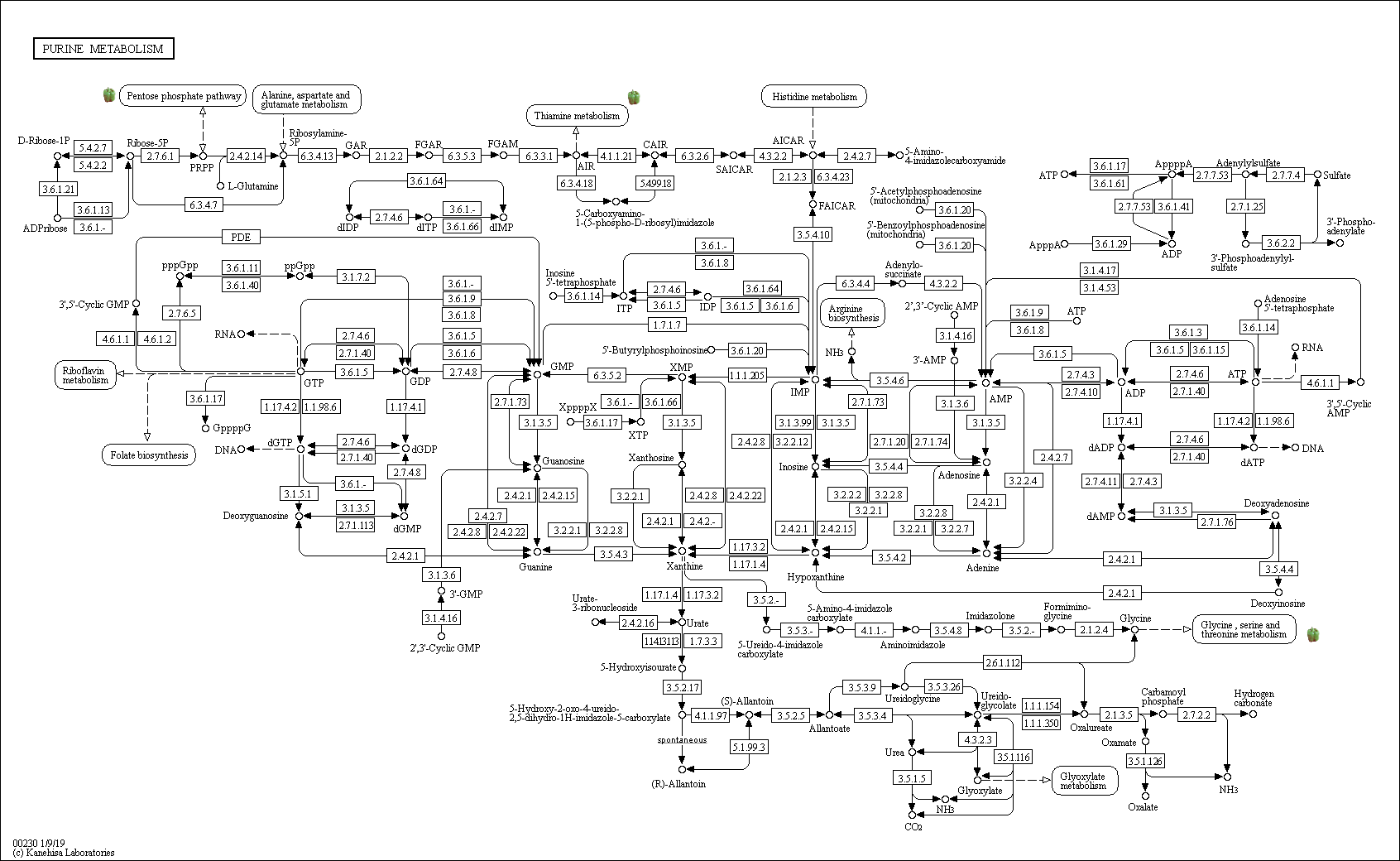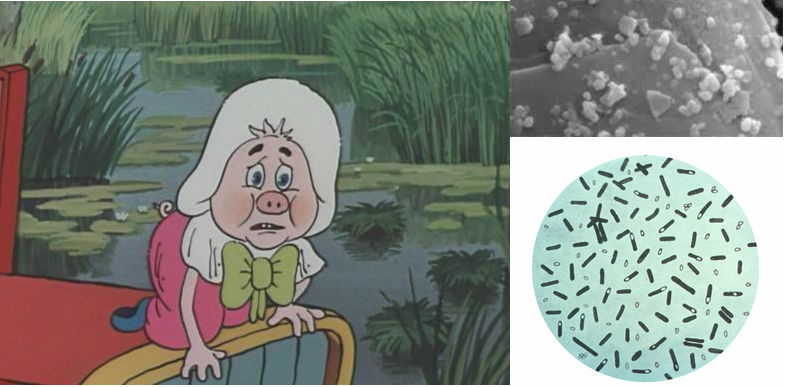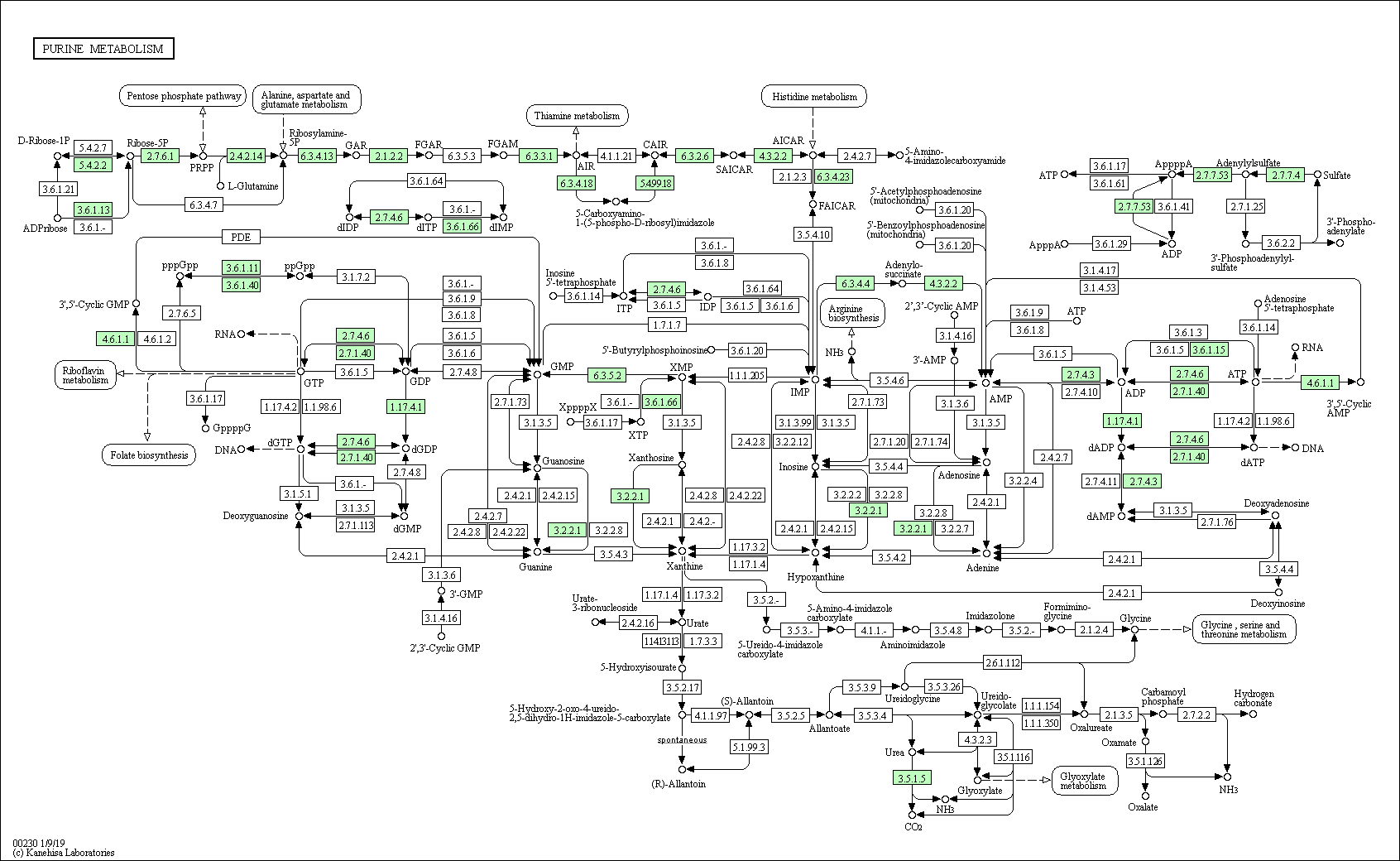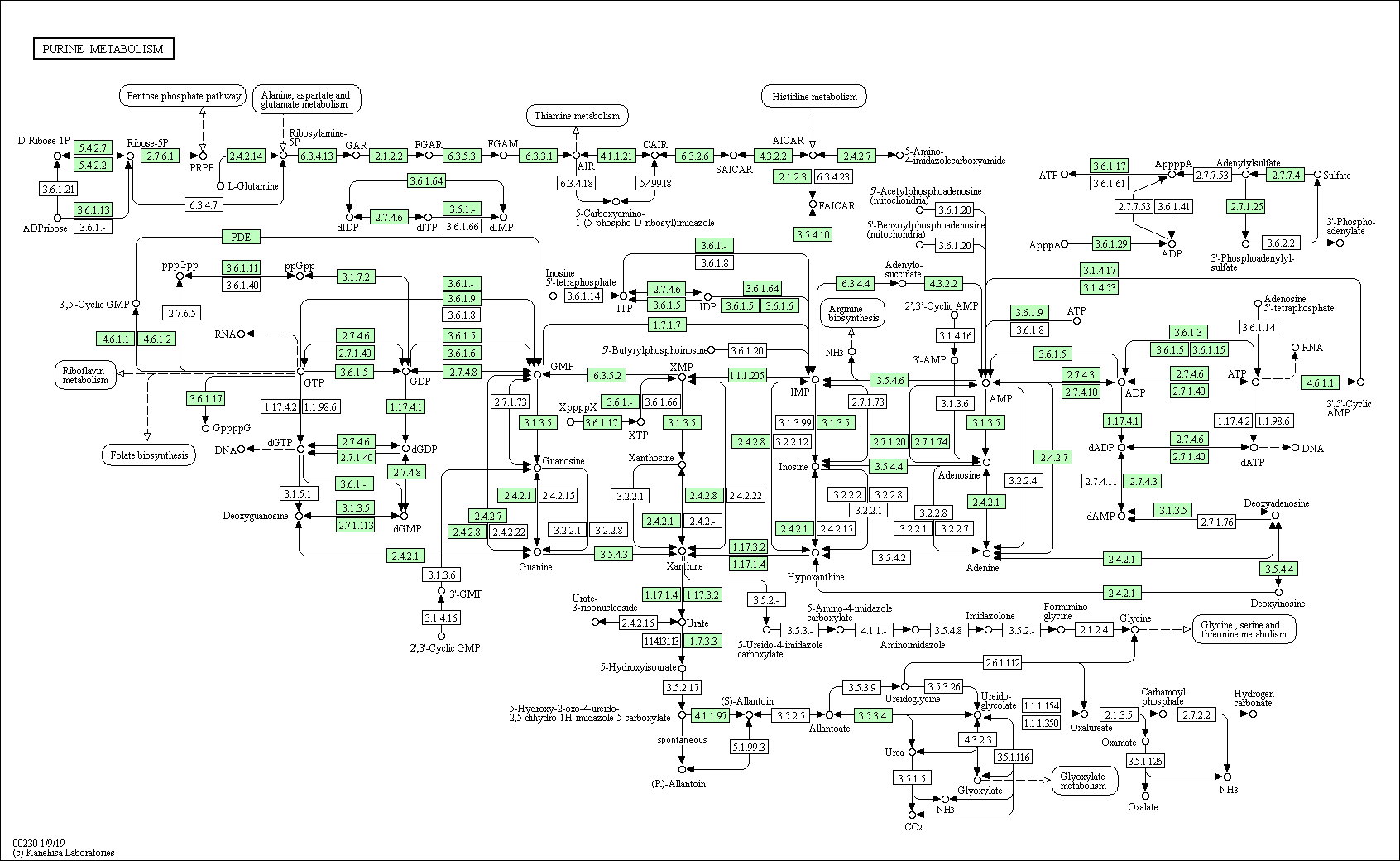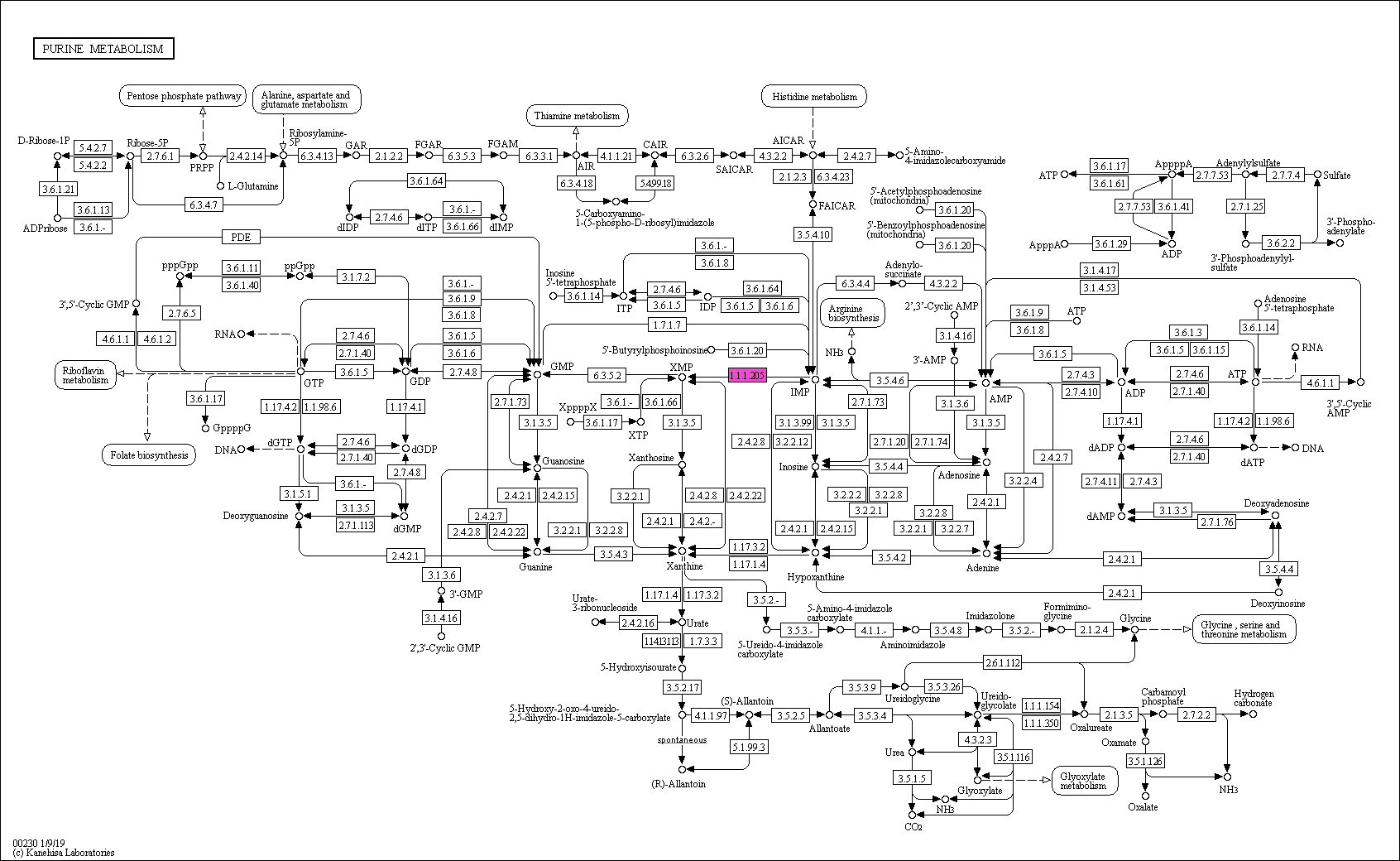Overview of purine metabolic pathway
Here purine pathway map is presented. Picture has been taken from http://www.genome.jp/kegg/ , mapID - map00230
Main and the most evolutionally conservative part of a pathway is a synthesis of IMP from ribose-5P. An absolute majority of the organisms are able to synthesise purines, except few bacteria and parasites.
For that pathway, pentose, coming from a pentose phosphate pathway(marked with pepper), is considered to be the main source. IMP plays a role in different compounds synthesis, guanine or ATP for instance.
Degradation of products of that synthesis leads to different products, primary xanthine or hypoxanthine, that have metabolized into urea, ammonium cation or allantoin. We can see that AIR produced during IMP
synthesis could be used in thiamine metabolism, and glycine, produce during xanthine degradation could be reintegrated into cell pathways.
Purine metabolic pathway in different life domains
For that task i chose Clostridium botulinum strain E3 from Clostridia class, phylum Firmicutes, Metallosphaera sedula Thermoprotei class, phylum Crenarchaeota and pig
(Sus scrofa), from Mammalia class, phylum Chordata
Russian name exists only for Sus scrofa - Каба́н
Metallosphaera sedula metabolic pathway
Clostridium botulinum metabolic pathway
Sus scrofa metabolic pathway
We can see, that almost all enzymes from IMP synthesis presented at almost all species, 2.4.2.14, 6.3.4.13 and 2.1.2.2 for example. They set a series of reactions and compile an IMP synthesis pathway.
But in Clostridium botulinum, it seems there is no way for synthesis CAIR from AIR, and Metallosphaera sedula is not able to synthesise FGAM from FGAR. But other proteins exist in that species.
So, they could partly realize that pathway. And absence of that enzymes in KEGG looks interesting and provides an opportunity for further research.
KEGG Reaction
https://www.genome.jp/dbget-bin/www_bget?rn:R01130 id:R01130
EC:1.1.1.205 is IMP dehydrogenase. It catalyzes transformation of an Inosinic acid to Xanthosine 5'-phosphate.
© Gumerov Ruslan, 2017
